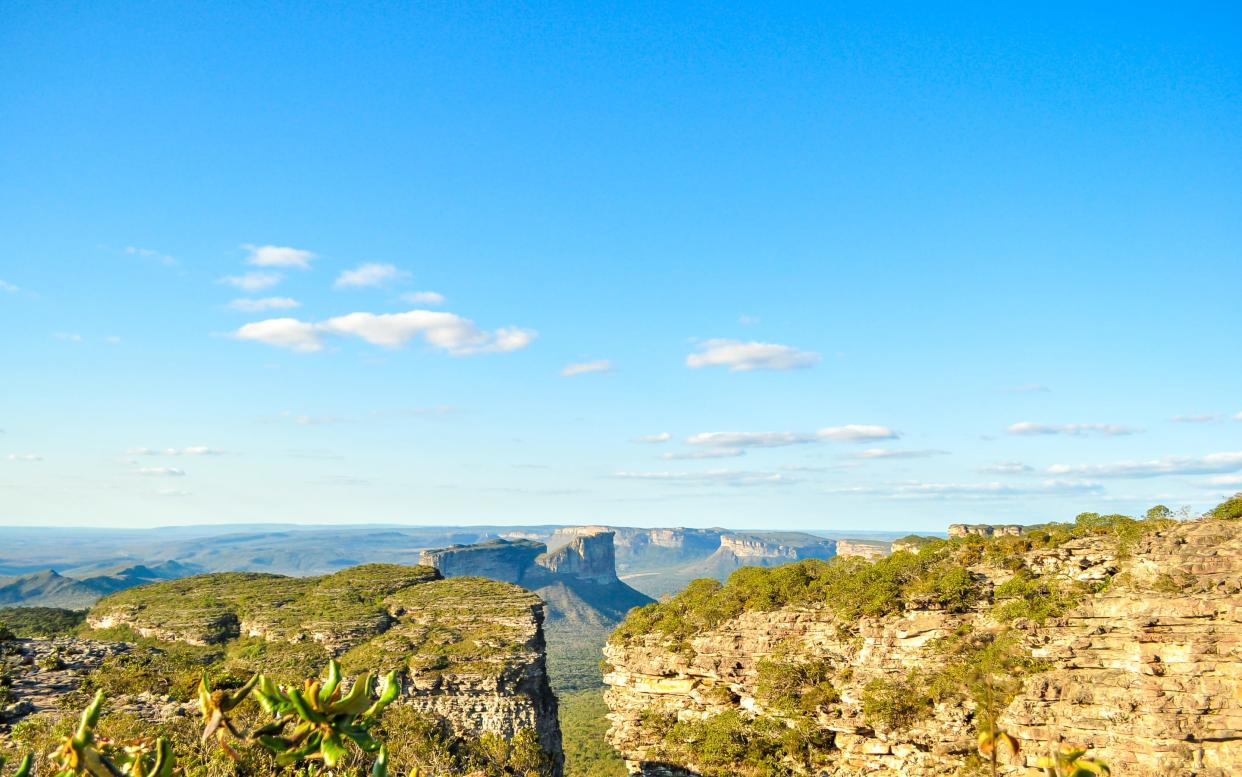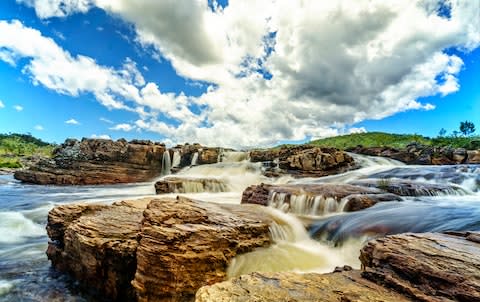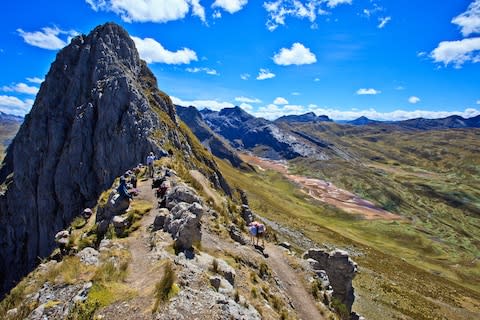The seven unexplored wonders of Latin America

Latin America is twice the size of Europe, or almost 150 Englands. It has national parks bigger than Belgium. In Patagonia, the population density is 1-2 people per square kilometre – that’s a million square metres to stretch out in.
Overtourism hasn’t impacted the way it has here or in parts of Asia, though Machu Picchu, Torres del Paine National Park, the Galapagos Islands and Mexico’s Mayan Riviera are getting a weeny bit hectic.
Thankfully, there’s no need to limit a holiday to these, nor indeed to the traditional destinations and routes that the larger, less interesting tour operators love to promote.
There’s nothing wrong, of course, with Rio or Buenos Aires, the Brazilian Pantanal, Quito’s old city or Cuzco, or all the other “classics” of the continent. But why not combine them with one of the barely visited wonders of the region?
Below are my choices, from off-radar nature national parks to unexplored biomes to wild and lonely islands. A recent boom in budget airlines in Latin America and the growth in tailor-made specialist firms – that love to discuss and plan bespoke itineraries – makes all of these destinations easier to get to than ever.

La Puna, Argentina
The breathtaking Andean Altiplano (high plain) extends from Lake Titicaca to the Atacama desert. It also steals into the north-west corner of Argentina, where it’s known by the Quechua word “Puna”. In the provinces of Salta, Jujuy and western Catamarca are volcano-studded plateaus above 3,500 metres, snow-covered peaks, towering sand dunes, and salt lakes where flamingos feed. Hire a 4WD (with or without driver) and get away from the backpacker circuit.
Bookable with www.pura-aventura.com.

Elqui Valley, Chile
Blessed with some of the clearest skies in South America, this winding valley is known for its starry skies. Observatories are dotted here and there, and you can combine astronomical evenings with wine tasting. Elqui is also a major centre for pisco production, with vines growing on the steep valley walls on the road side. The resort town of La Serena is at the western end, so this is best combined with a beach break.
Read about my own visit with Audley Travel.

Tierra del Fuego, Argentina and Chile
Patagonia is always in the travel news. Its southern limit is the island of Tierra del Fuego, shared by Argentina and Chile. Gradually opening up it’s a place to see sub-Antarctic scenery and fauna (including penguins) and stays on remote estancias. The masses congregate around Ushuaia but there are beautiful lakes, wild capes and lush forests, perfect for hiking, kayaking, camping and off-roading.
See the film trailer for Peninsula Mitre, about two intrepid surfers, to get a flavour of what we’re all missing. Swoop Patagonia goes there.

Chapada Diamantina, Brazil
Established as a national park in 1985, this beautiful, strange region in Bahia state - the pretty town of Lençois in is the gateway - is full of glittering waterfalls, sandstone-and-quartz caves, table-top mountains and forested plateaus. Easy hikes conclude at shady swimming holes where the water is a deep blue hue. The Pati Valley is a great 3-5 day trek, with no roads or internet to distract you from the awesome beauty of the setting.
Guides are essential and can be arranged through bespokebrazil.com.

Kaa Iya National Park, Bolivia
The semi-arid scrubs of the Gran Chaco constitute one of the American biomes that boasts the greatest biodiversity. Vulnerable to the expansion of ranching from the southern pampas, tourism is one of the best ways to witness and preserve this delicate ecosystem. Kaa Iya National Park in southeastern Bolivia is bigger than Belgium and one of the largest protected areas in the continent; famous for its very visible jaguars, it’s also a safe haven for ocelot, peccary, maned wolf, Chacoan mara (similar to a cavy), armadillo and many birds. Easy to get to via Santa Cruz airport, Bolivia’s busiest, the park is a challenge due to size and limited infrastructure – so book with experts.
Check out Geodyssey and local firm Bolivia Milenaria for ideas.

Huayhuash, Peru
One day the Huayhuash circuit will be one of the most famous treks in the Americas, alongside the W in Torres del Paine and the classic Inca Trail. For the time being, the high-altitude 10-14 day walk is only tackled by smallish numbers of groups. With passes and campsites located at more than 3,500 metres above sea level, acclimatisation is required. But once you adapt, this is a scintillating realm of turquoise lakes, sharp Andean peaks carved by glaciers, rugged valley floors and the cleanest air on earth. A day’s drive from Lima, it is remarkably accessible.

Darién Gap, Panama
The mythic “gap” between South and Central America is in fact a narrow swathe of jungle, left wild and road-free to limit the movements of drug traffickers and migrants. Not a place to wander alone, it’s nonetheless increasingly opening up to travel around the edges and affords visitors a chance to see pristine forests and meet the indigenous communities who have lived here since pre-Columbian times. The recently opened African safari-style Canopy Camp, run by the expert team that manage the wonderful Canopy Lodge and Tower in central Panama, is the best base for a birding holiday. By day, golden-headed manikins, barred puffbirds and red-throated caracaras flit around the canopy; owls, potoos and nightjars keep the nights lively. Panama City – the best entry-point – marks the 500th anniversary of its founding this year and Air Europa is launching new flights from Madrid in June.
See Cox & Kings for overland suggestions and, for a cruise along the canal with a visit to Darién, check out Journey Latin America’s Journey Between the Seas.
See lata.travel for more ideas and a list of specialist tour operators.


